Mars Curiosity Rover Readies For Arrival On Mars
Late tonight on the West Coast of the United States, scientists at the Jet Propulsion Laboratory will be waiting nervously as the Mars Science Laboratory, including the Curiosity rover makes a dangerous descent to the Martian surface on a mission that many hope will find signs of life in a Martian crater:
NASA’s Mars Curiosity Rover closed in on its target today, all systems go for a landing on Mars late tonight (Monday morning at 1:31 a.m. EDT). If there’s anxiety at the Jet Propulsion Laboratory in Pasadena, Calif., which controls the mission, one can understand.
Curiosity (the mission’s formal name is Mars Science Laboratory) is the largest, most expensive and most ambitious Mars probe sent by the United States in a generation. It’s been a decade in the making and ran up bills of $2.5 billion.
NASA is playing down expectations, but if the building blocks of life are buried in the Martian soil, Curiosity’s miniature onboard chemistry laboratory is designed to pick them out.
“Can we do this? Yeah, I think we can do this. I’m confident,” Doug McCuistion, head of the Mars exploration program at NASA headquarters, said Saturday. “We have the A-plus team on this. They’ve done everything possible to ensure success, but that risk still exists.”
“We have to keep looking,” said Andrew Kessler, a writer who spent three months covering the team that made the last successful landing, in 2008. “Every question leads to more understanding,” said Kessler, the author of a book called “Martian Summer.”
Curiosity weighed 5,293 pounds on Earth. It’s the size of a small car and much, much bigger than the twin rovers Spirit and Opportunity, which landed on Mars in 2004, cradled in airbags. Curiosity is simply too big for that, so it will be lowered to the surface by a heat shield, then a parachute, then retro-rockets, and finally a rocket-powered sky crane. That’s something engineers have never tried before — and that’s what makes this so scary for them.
Indeed, the landing tonight is perhaps the most riskiest part of the mission and JPL engineers have taken to calling it “seven minutes of terror” because, for seven minutes they’ll have no idea if they succeeded or not:
Because the rover is so much larger, more complicated and more ambitious than earlier models, it has to land in a new and far more hazardous way. The landing, which could never be tested in full on Earth, includes a hovering rocket stage, a kind of sky crane, to lower it to the ground. NASA’s chief scientist John Grunsfeld has said that because of that heightened landing difficulty, in addition to the unprecedented sophistication of the instruments on board, Curiosity is “the most important NASA mission of the decade.”
Anxious engineers and scientists will be waiting for a touchdown “beep” — which comes as computer code — that will report a safe landing. It could come as early as 1:31 a.m.
Several hours of silence from Curiosity are quite possible, officials said, since the rover’s signals can be received only if the Mars orbiters that will relay its messages are in precisely the correct location.
But if nothing is heard from the orbiters or through the Deep Space Network after about 18 hours, said MSL deputy project manager Richard Cook, then it’s time to start worrying about the fate of the mission.
Here’s a video with JPL engineers discussing the risky landing:
If you’re interested in watching the landing, there are a number of outlets:
Official coverage of the landing will begin on NASA TV at 8:30 p.m. Pacific and 11:30 p.m. Eastern on Sunday night.
On UStream, the NASAJPL stream will include landing-day commentary from those involved in the Curiosity project. Before the official landing program begins, NASA will provide a status update from 9:30 – 10:30 a.m. Pacific, followed by a preview of the Mars landing from 3-4 p.m. and landing coverage that starts at 8:30 p.m. The HD NASAJPL2 stream will be restricted to Mission Control transmissions.
Microsoft has also added a Mars Rover section to the Xbox 360 dashboard on the main page, Xbox Live programming director Larry Hryb wrote in a blog postthis week. The section includes a quiz on the mission, details about the engineering behind the rover, and more. Xbox Live will link up with NASA TV so you can tap into the final landing footage directly from the console. Last month, NASA released a game for the Xbox 360 designed to give users a peek into what landing the next Mars rover will be like.
San Francisco’s Exploratorium will also feature a webcast beginning at 10:15 p.m. Pacific. The museum currently houses a 7-foot replica of the Curiosity rover, on loan from JPL until Sept. 16. Once the rover starts its mission, the Exploratorium will have access to high-res images from Curiosity, which will be viewable during live webcasts online and at the museum on Tuesdays, Thursdays, and Saturdays at 1 p.m. Pacific.
If you live near New York City and enjoy Times Square in the middle of the night, the Toshiba Vision screen in the neighborhood will air the landing, with coverage beginning at 11:30 p.m. Eastern and running until 4 a.m.
Or, you can just check back here tomorrow morning when we should have at least some word of Curiousity’s fate. Good luck, yes
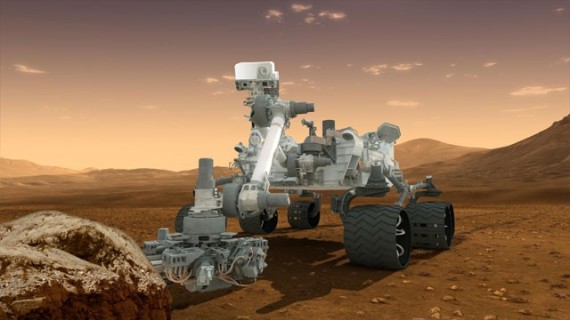


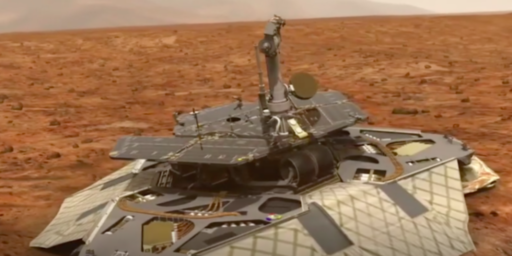
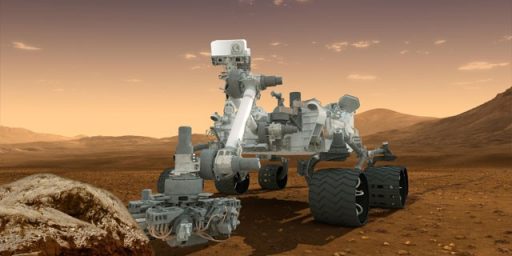
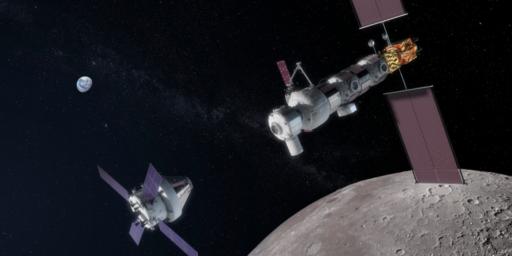
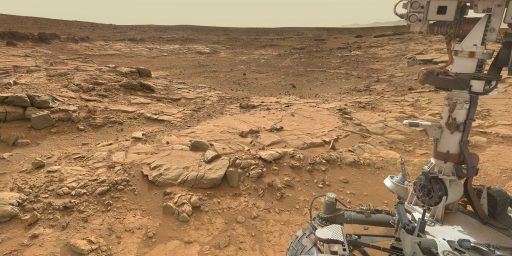
I know there are legitimate engineering reasons for using it but the first time I saw that “skycrane” concept I thought are they out of their minds?
Rube Goldberg rejoices
But wait, they promote this “7 minutes of terror” but it could be up to 18 hours?
Gotta love NASA PR hype. Sure it takes 7 minutes to land but 14 minutes for the signal to reach earth. So what if they saw it failing in real time? You built your bridge, now put the car in gear and drive across it. Now, why didn’t they include a black box that could survive the crash and send back the “you screwed up” message?
@ JKB
Are you wearing your “America can’t get it done” tshirt today?
“why didn’t they include a black box”
The wreckage will be clearly visible by the Mars orbiters, and some real-time telemetry will be available, I believe, to provide a clue.
@JKB:
http://www.youtube.com/watch?NR=1&feature=endscreen&v=z8rYotiiFP8
Successful landing. It’s a good thing we did not have chicken hearts like JKB around in the early days of the space race, Alan Shepard would still be sitting on the launch pad.